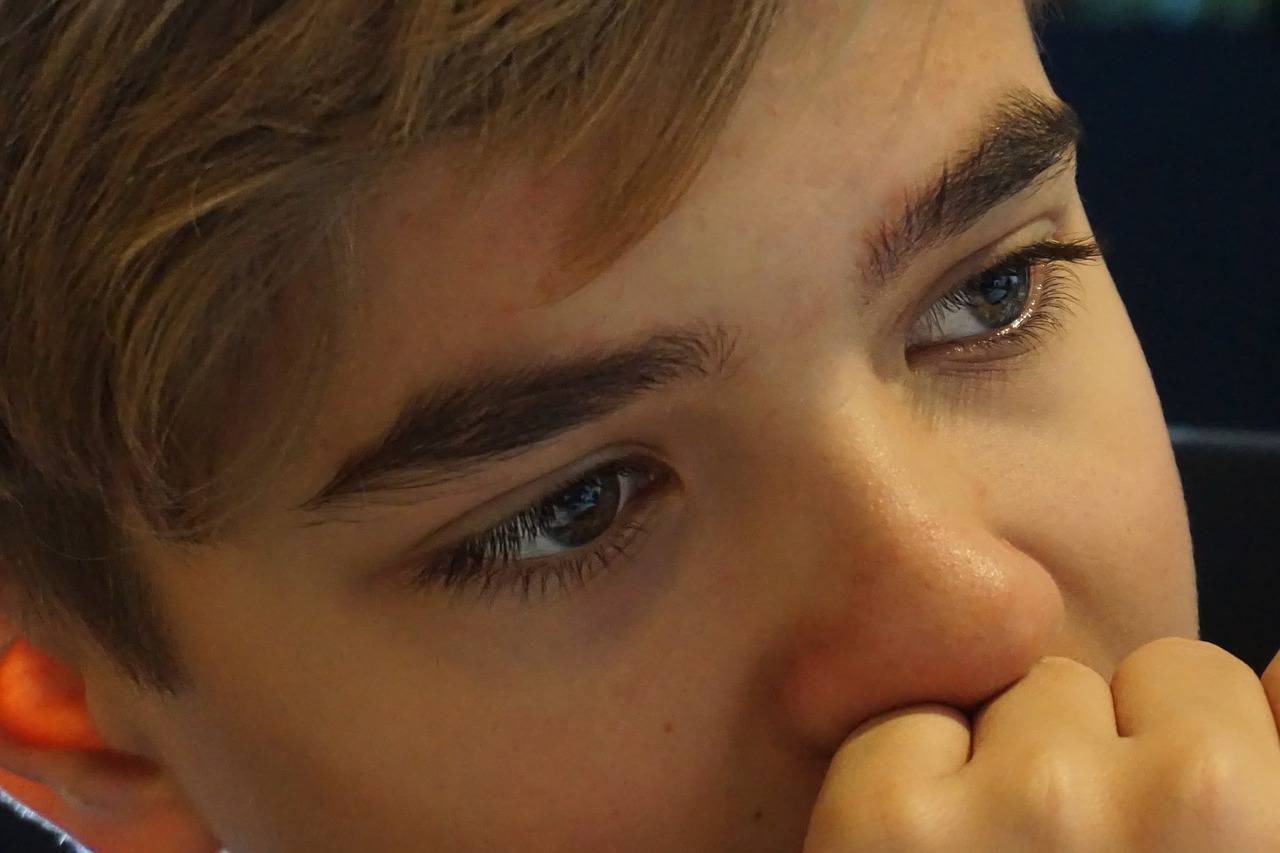How To Calm Down An Anxious Child?

by Dr. Shanthi Thomas
It is the end of term holidays and tomorrow is school reopening. Your 10 year old is in tears, in bed, and says ‘I don’t want to go to school tomorrow’. Or if tomorrow there is a test, he says ‘I feel there is a lump in my chest, I have a stomach ache and I cannot breathe’. Most mothers are familiar with these and similar scenarios. In all these difficult situations, the culprit is the same. It is anxiety. When children are anxious, they experience the same sensation of fear and panic that our ancestors had when they faced a tiger or lion in the wild. They experience a ‘fight, flight, or freeze’ response, as the body’s sympathetic nervous system is activated, and adrenaline and noradrenaline are released, increasing the heart rate, breathing rate and blood pressure.
Here are a few science-based tips to help parents calm down anxious children:
1. Use a Before/After/During Ritual
Rituals in daily life are often called “stability anchors” that help kids relieve anxiety. Parents can consider introducing a ritual before, after or during an anxiety-provoking situation. If exam anxiety is troubling your child, try letting him have a ritual before and after. For example, he may chew gum before every exam, and have an ice cream after successfully completing the exam. Some children are anxious for no reason at times. So you may have a ritual during the period of anxiety such as hugging a pet every time anxiety strikes.
2. Stimulate the Vagus Nerve
The Vagus nerve runs from the brain through the thorax to the abdomen. Stimulating the Vagus nerve can interrupt the anxiety attack by lowering the heart rate and sending the message to the brain that the person is ‘not under attack’. There are many ways to stimulate the Vagus nerve, such as chewing gum or eating a piece of dark chocolate.
3. Cross the Midline
Moving one’s feet, hand and eyes across and to the other side of the body, ie, across the midline, can help reset and ground the brain. There are many concrete ways of doing this such as
- Windmills: Have your child pretend that he is a windmill, by moving his arms in a circle, crossing across the middle of the body.
- Cross Marches: The child marches in place while touching the opposite knee.
- Wiping motion: Wipe the table with one hand.
4. Deep Breathing
This is the classic remedy for anxiety, but one that is very difficult for kids to do. The key is to take slower, deeper breaths from the abdomen instead of rapid, shallow breaths directly from the chest. To get kids to do this, you could make them blow bubbles, or make it a game by inhaling and exhaling in 5 seconds each. Other strategies for getting kids to breathe deeply are as follows:
Balloon breathing: Ask your child to close her eyes and imagine the balloon that she is going to blow. Let her name the colour. Now, explain to her that she cannot blow too fast or too slow. She has to inhale for a count of 5, hold her breath for a count of 5 and exhale for a count of 5. This can be done with a real balloon also. Once the balloon is blown, ask her to write her worry on the balloon, and let it fly off.
Rainbow breathing: The same technique of 5-5-5 seconds breathing. But this time, ask your child to imagine that she is going to breathe out a colour of the rainbow. Let her say which colour it is, and also the things that come in that colour. For example, if she says red, she might say strawberry, apple etc. Complete this activity for the entire rainbow.
Stop, Breathe and think app (MyLife app): This app teaches how to do deep breathing in a guided incremental way. This could be used every night before sleep as a mindfulness exercise.
5. Get moving
All children who are anxious should play a game for an hour in the evening, do yoga or exercise every day, to a point that they sweat profusely. It is best if this is done in a group, but a yoga session with a parent alone could work. Research shows that children who engage in regular physical activity from a young age have lower rates of anxiety than their less active peers. Exercise releases endorphins in the brain that boost a person’s mood along with energy levels.
